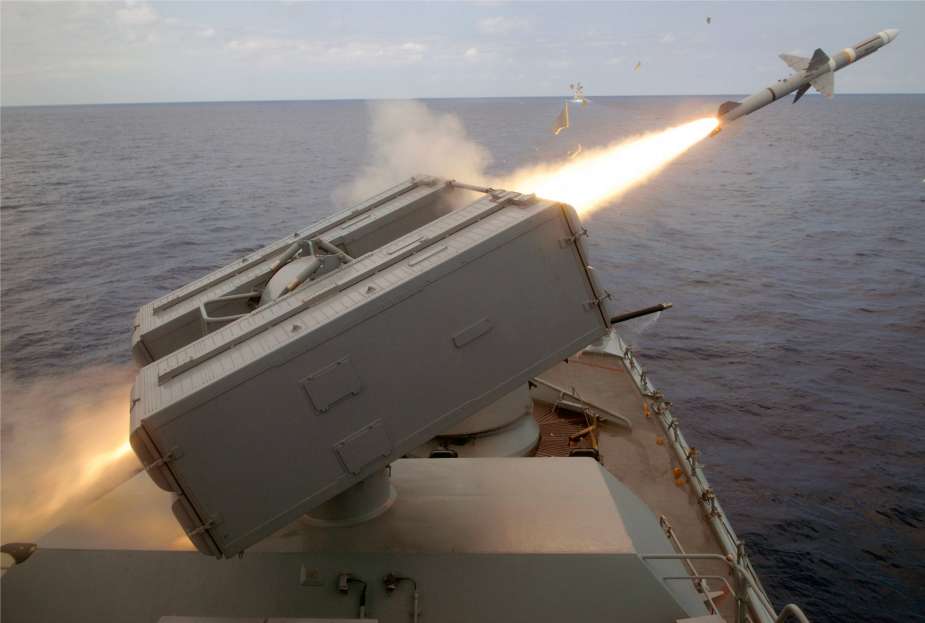Breaking news
Belgium to supply Ukraine with Sea Sparrow missiles purchased from Germany.
According to information published by L'Echo on September 4, 2023, following the decommissioning of Germany's last Bremen class frigate that used NATO's Sea Sparrow surface-to-air missiles, the Belgian defense has purchased a stockpile of these missiles.
Follow Navy Recognition on Google News at this link
 A NATO Sea Sparrow missile is launched from the bow of the German navy Bremen-class frigate Lubeck during the sinking exercise portion of UNITAS Gold. (Picture source: US DoD)
A NATO Sea Sparrow missile is launched from the bow of the German navy Bremen-class frigate Lubeck during the sinking exercise portion of UNITAS Gold. (Picture source: US DoD)
The cabinet of Defense Minister Ludivine Dedonder further revealed that an upcoming government meeting would determine the possibility of another military equipment delivery to Ukrainian forces, valued at slightly more than €150,000. This proposed aid comes in addition to previously announced support plans.
According to reliable sources, about one-third of the aforementioned amount will be allocated to the donation of eight Sea Sparrow missiles. As Germany has decommissioned its last frigate using this American-designed NATO equipment in its horizontal firing version, there's potential for Ukraine to repurpose them as ground-to-air missiles or possibly drone equipment. Belgium secured these missiles at a cost of €7,000 each.
It's worth noting that Belgium had previously committed to an aid package in January, with a budget of €90 million, including the supply of missiles and assault rifles.
Context
The Sea Sparrow is primarily a naval surface-to-air missile system, designed to counter a spectrum of aerial threats and operating within the medium-range category. It is equipped with a semi-active radar homing guidance system.
The landscape of modern conflict often involves a mix of fighter aircraft, reconnaissance drones, and cruise missiles. In this setting, the Sea Sparrow offers a countermeasure, using its guidance system to track and intercept aerial targets based on radar reflections. The missile's ability to reach speeds up to Mach 2 allows for a responsive engagement against potential aerial threats.
Considering the wide range of aerial platforms that can be deployed in such conflicts, the Sea Sparrow offers a tool to address these challenges. Its vertical launch system facilitates the capability to engage multiple targets in quick succession.
The Sea Sparrow's design allows for potential integration into various platforms or even adaptation for diverse roles, such as in ground-to-air configurations.
There's also the potential for these missiles to be incorporated into broader defense networks, pairing with radar and other sensor systems for comprehensive aerial coverage.




























